This content is also available in:
English
Čeština
Magyar
Polski
Türkçe
Varias características se deben considerar en la evaluación de una muestra:
- El tipo de célula (tal como célula tiroidea, macrófagos, linfocitos)
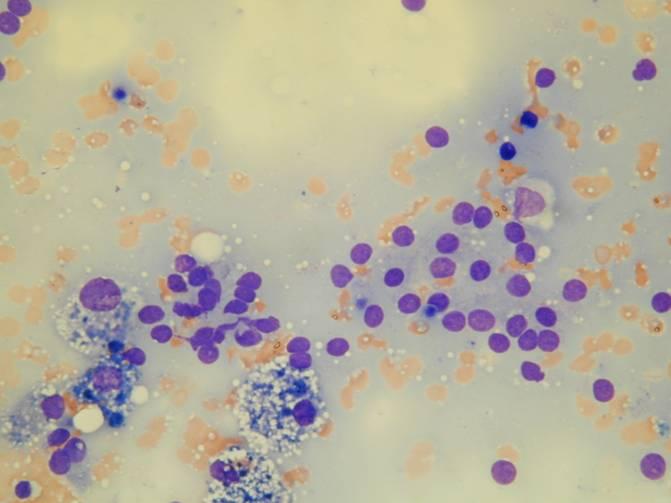
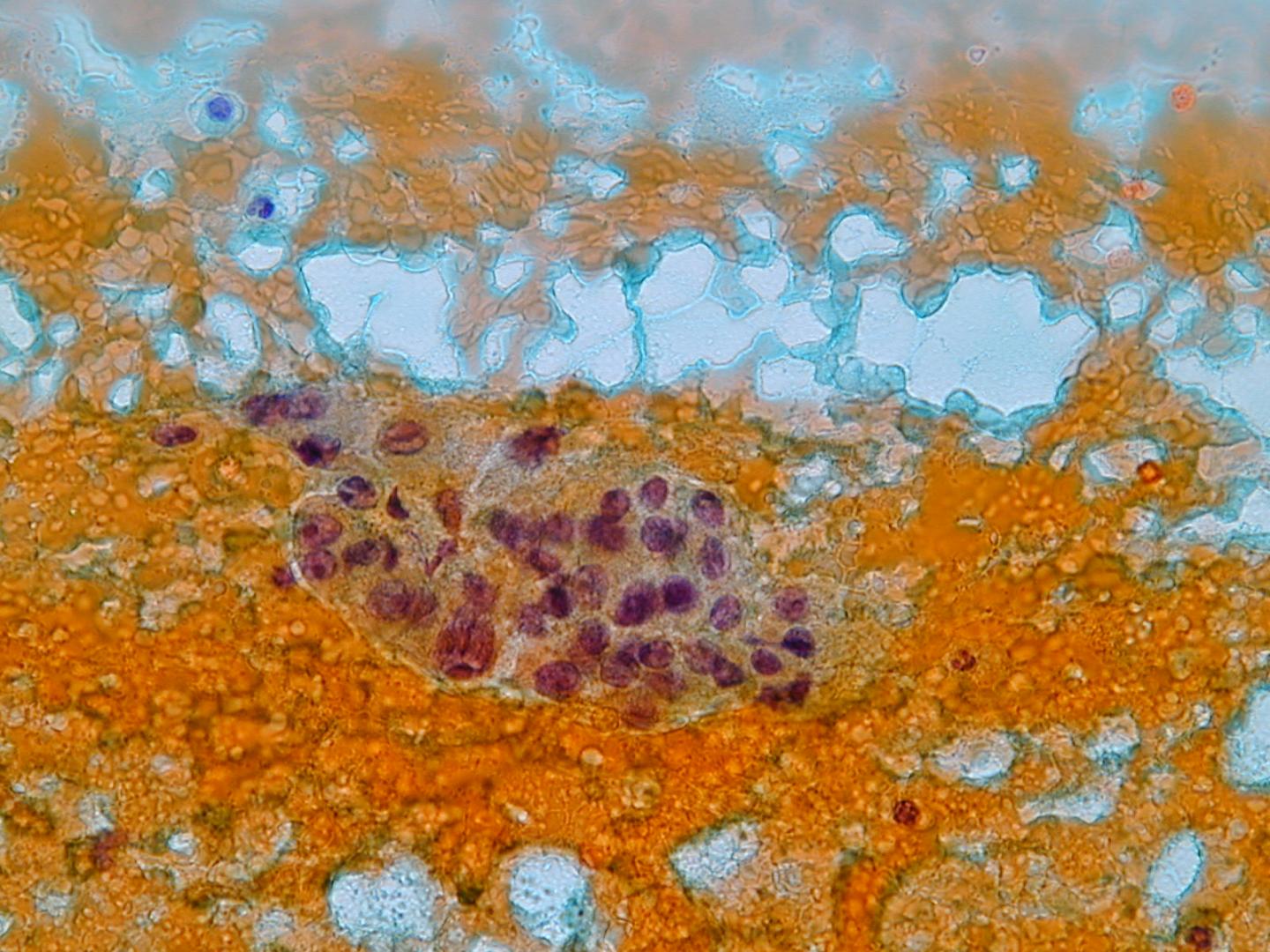
- La cantidad y tipo de coloide (escaso-abundante, fluido-denso)

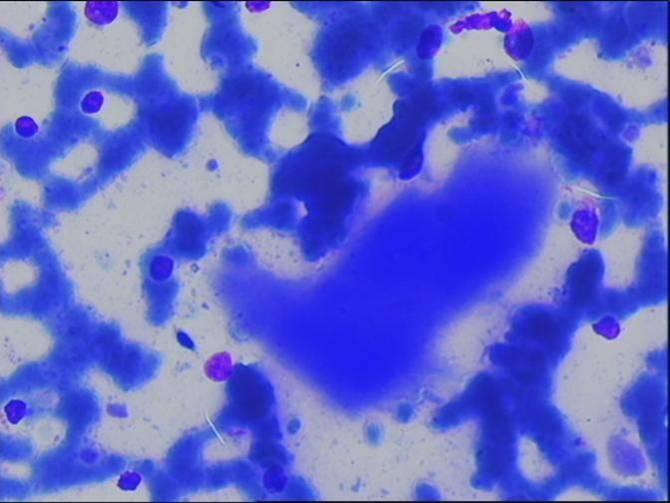
- La celularidad (escasa, moderada o marcada)


- La arquitectura (monocapas, grupos apiñados, sábanas, macro/microfolículos, grupos papilares, células aisladas)
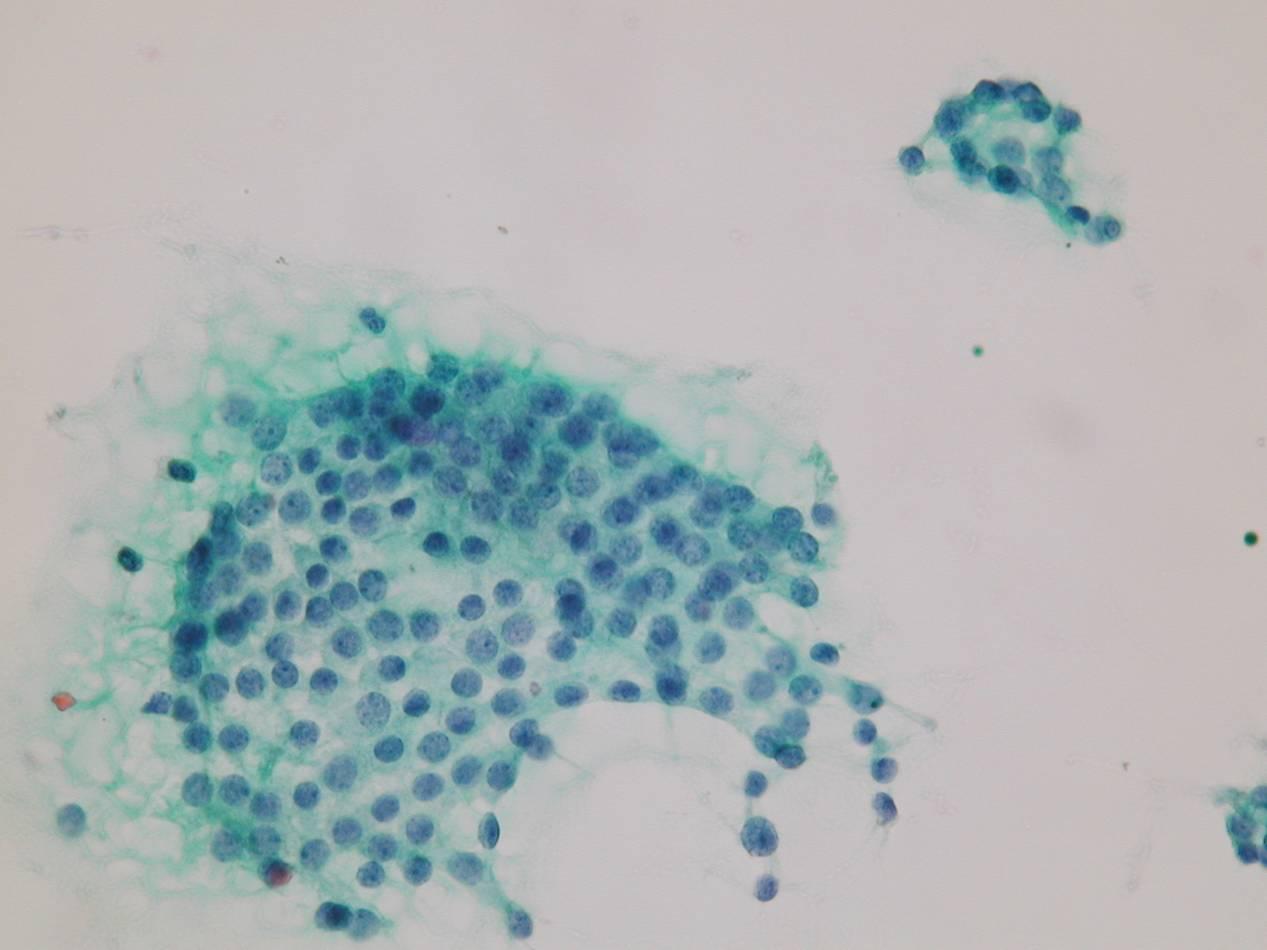

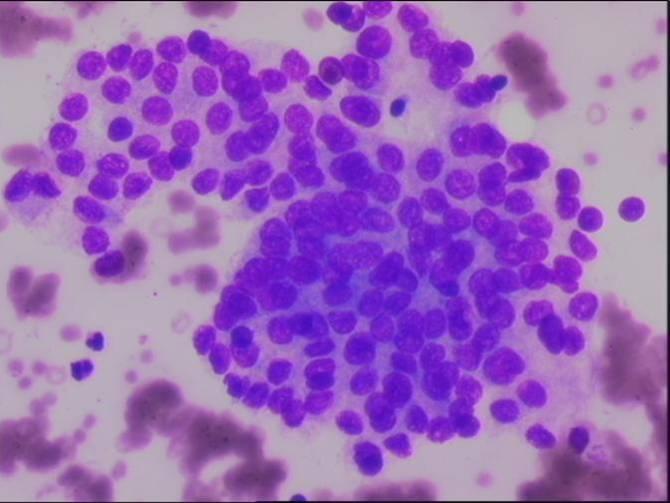

- La presencia de núcleos desnudos

- Características citológicas (citoplasma, núcleo)
En lesiones neoplásicas las muestras son con frecuencia altamente celulares. Las sábanas planas son comunes en el bocio y los adenomas macrofoliculares, pero pueden también estar presentes en carcinomas. Los macrofolículos están usualmente asociados con el bocio multinodular y los adenomas macrofoliculares. Un predominio de microfolículos puede ser sugestivo de neoplasia folicular. Los grupos papilares, con células recubriendo un tallo fibrovascular, son característicos del carcinoma papilar. Los frotis con una alta proporción de coloide a células foliculares usualmente es indicativo de un nódulo benigno.
Características citológicas:
- citoplasma (cantidad, tinción)
- patrón de cromatina
- membrana nuclear (suave o irregular)
- hendiduras nucleares y pseudoinclusiones



